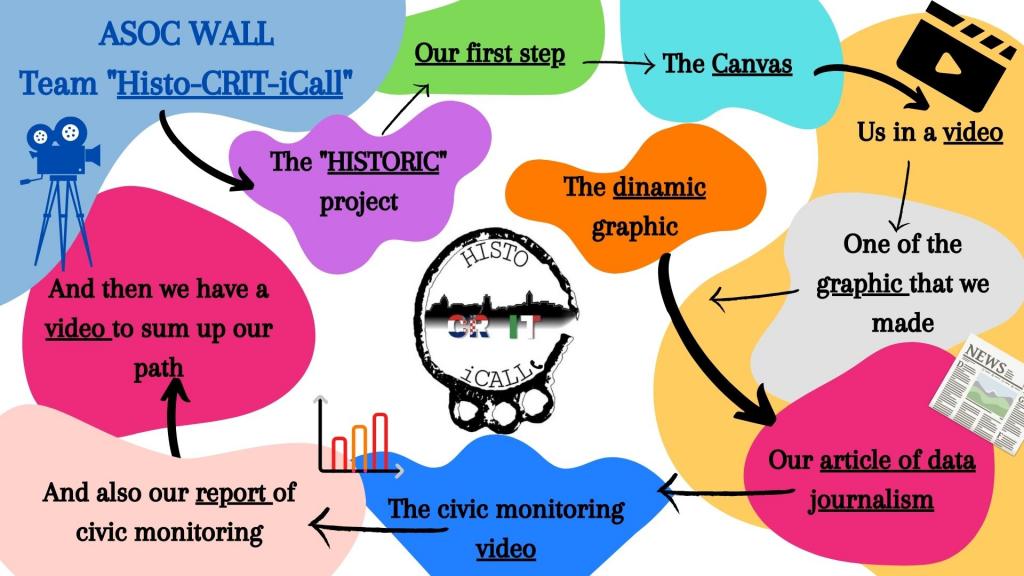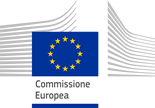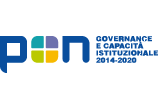Link for the ASOC WALL https://www.canva.com/design/DAFDknc2XkU/CQ91aDPmniyX6HzPpgdwAA/view?utm...
High school Buzet and IIS “BoccardiTiberio” (Termoli Italy) decided to apply for the participation in the Pilot project “ASOC – Interreg Italy – Croatia” so that the students would acquire new knowledge and experiences which could benefit them in their future.
After meeting several times, we agreed to work on the project “Historic”- Heritage for Innovative and Sustainable Tourist Regions in Italy and Croatia. This project has 6 partners and a budget of € 2.432.995,75.
We’ve decided to undertake this project for our love for history and roots because we really would like to promote our resources, culture, and city. The heart of the project caught our attention and inspired us: to build a historical and cultural bridge between the Italian and Croatian coasts, an area that has always been a centre of trade and different types of exchange, since the Romans time. According to the partners, the aim is “(...) a landscape design for creating an “Historical walk through”. 4 pilot areas have been selected to be valorised through a common approach that includes web applications and augmented reality, always keeping in mind a type of tourism that needs to be sustainable, responsible and innovative. “This type of Cultural Heritage valorization will enrich the tourist offer creating a recognizable tourist attraction that would attract guests out of the main season.”
Our research will increase the local community awareness of the importance and possibilities of financing sustainable tourism projects through EU funds. Furthermore, it will show the importance of cross-border cooperation and draw attention to the need for transparency in the implementation of EU projects. So, we hope our project may encourage tourism students but also interested individuals to investigate in more detail how EU funds are currently used and what is possible to finance with them. In addition to the target groups mentioned, we hope that this research and approach we used will interest high school population at the regional level in implementation research projects.
Students’ impressions were overwhelmingly positive. In their own words, this project has enriched them with new acquaintances, information on the cohesion politics, civil monitoring, analysing data, team management, and the division of roles. What they are most pleased with is gaining life experience, the possibility of creative work on various platforms (digital literacy), and growing their self-confidence.
The Croatian (Municipality of Medulin and the Municipality of Murter-Kornati) and Italian (Municipality of Rovigo, the University of Padua, and the Regional Agency for the Right to Study – Venice) partners worked together with the goal of fulfilling certain plans of the project and presenting them to the targeted groups.
Our research has been conducted following the same path. The first thing we have discovered is that our project was still active because of the pandemic. The European Commission has postponed the deadline to 30th October 2022, which led to a delay in the use of the funds allocated. Another problem that the pandemic has brought is the modification of the partners initially involved. For this reason, it was quite difficult to find the contact people.
The starting point of the research were the primary and secondary data found on the Interreg program website, on the partners websites, the MiBACT and ISTAT sites. The massive use of the Internet is motivated by the distance from the sites involved in the project. We tried several times to reach the lead partner but it was impossible to speak to any of the people working in the project.
Our teams prepared a list of questions to submit to every single partner and those who accepted to speak with us were very helpful, for example the city of Rovigo and ESU Venice.They told us about their specific workpackage , the tasks that were already implemented and those yet to be completed, the difficulties they experienced. The project has surely contributed to the discovery of Croatian and Italian artistic sites that were quite unknown.
As we mentioned before, one of the aims of the project is to give value to small places using new technologies like augmented reality. These tools allow tourists to go on virtual tours, thus exploring the artistic heritage in advance and inspiring people to visit them. These activities have been fundamental during the pandemic, together with the use of social media.
We also realised that the people that live in the area involved by the project “Historic” are not aware of this initiative and this really impressed the students. As an example we would like to mention the survey conducted in the municipality of Medulin. Since we were not able to travel there, we made an online survey that was sent to the residents of the municipality of Medulin. As of this writing, the survey was completed by 11 people and the following results were obtained: a higher percentage of women than men completed the survey, and almost half of the respondents were over 59 years old. Slightly more than half of the respondents have not heard of the Historic project, or they are not aware of the fact that the municipality of Medulin participates in it, and as many as 91% of respondents are not aware of the construction of a historic center in Banjole.
Our goal was to gather information about the participants of this project and to investigate which plans the Croatian and Italian participants fulfilled and how the course of the project and these changes affected the number of tourists in Croatia and Italy over the stated years.
After analysing the survey, we came to the conclusion that the municipalities involved did not sufficiently inform its residents about the Historic project, its implementation and importance, but still should consider the small number of respondents who participated in the survey and need to be careful with generalisation. Nevertheless, we remain optimistic and hope that over time the goals of this project will be met and that a larger part of the population will soon be acquainted with it. We hope that the success of informing people about the project will increase in order to attract high school and generally younger population to carry out research projects at the regional level.
The civic monitoring on Historic can not be considered finished for two main reasons:
- because, despite the accurate research, there are still some important information missing. Probably, the most important ones are those coming from the lead partner, InfrastruttureVenetes.r.l.
- the project is still active , so the data that we have collected so far are not the conclusive ones.
We think that monitoring is a way to fill a gap in the dissemination of the activities implemented. It’s even more important: we realised that it is a fundamental part of the project. We also enjoyed the cooperation with our partners and we think that learning how to work together is even more important than the results.
With all the stated above, we expect the project Historic to reach its initial goal of enriching the tourist offers and attracting guests in and out of the main season.















